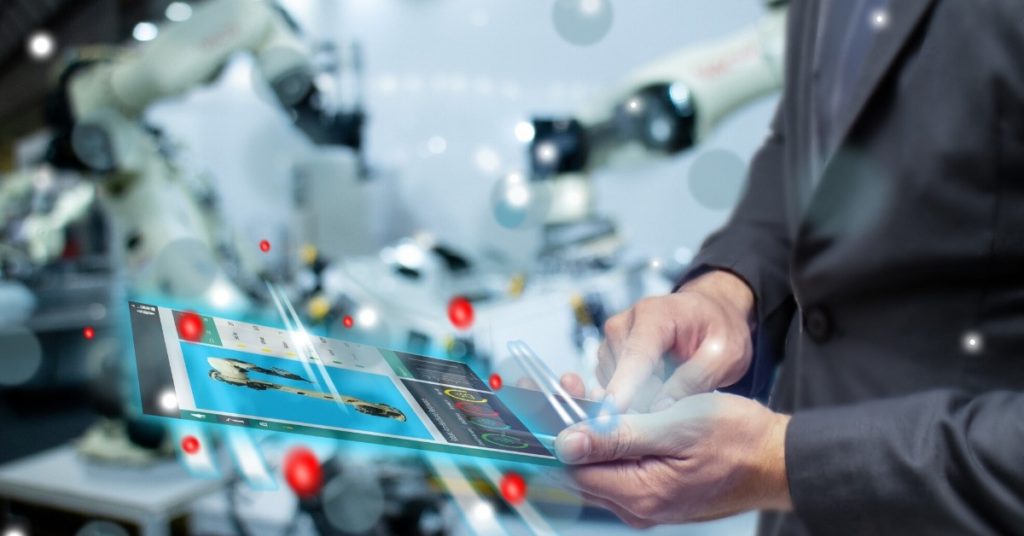The development of the smart factory is a key priority for manufacturers in all industries and sectors. It’s part of the digital transformation of business, and it’s essential to remain competitive as well as to meet the needs of consumers and end-users as well as B2B customers and regulators.
This all comes under the umbrella of Industry 4.0, the moniker for the revolution the manufacturing sector is currently going through.
Like the industrial revolutions before it, however, Industry 4.0 will take many years and decades to develop as new technologies and processes are created, and as companies, regulators, and consumers evolve.
So, what about the immediate future of the Smart Factory? What are the digital transformation trends that you need to be aware of for 2020?
In particular, what are the important smart factory trends that you should be considering now if you are in the pharmaceutical or MedTech industries?
Trend 1 – Big Data Analysis
Much of what is possible now and will be possible in the future with the Smart Factory is critically dependant on how we manage data, i.e. our ability to capture, transmit, store, analyse, present, and use data in a way that enhances manufacturing operations and the wider business.
With the ability to collect and store data, it’s not surprising that the volume of data is growing considerably. Making sense of and then putting to practical use this larger volume of data becomes the next challenge.
Big data analysis is the solution, and it will become increasingly important in 2020 and beyond.
Trend 2 – Predictive Analytics
One crucially important way of using big data is predictive analytics. With predictive analytics, you can anticipate problems, mitigate risks, take advantage of opportunities, and ensure resources are targeted in the right areas.
One way that pharmaceutical and medical device manufacturers are already using predictive analytics is in the area of machine maintenance.
Using technologies like digital twins, it’s possible to predict the impact that a variable will have on a particular piece of equipment, a production line, or on a process.
Information from sensors can also be analysed to predict when failures are likely to happen, enabling the scheduling of maintenance before the failure occurs.
Machine maintenance is only one area where predictive analytics is going to become increasingly important, however.
Manufacturers will also be able to improve their predictions on how markets will change, how risks will impact future performance, the impact of product or business expansion, etc.
Trend 3 – End-Customer Focused Business Models
The average consumer is changing in a number of ways, including placing increasing demands on manufacturers to offer personalised products.
This is even more apparent in the life sciences industries where there are considerable benefits to supplying patients with personalised medical devices and even drug products.
Manufacturers in the medical device and pharmaceutical industries are increasingly adapting their business models and production operations to meet these demands, not just for patients but also for health care professionals and organisations. In other words, they are moving from being solely B2B operations to having significant B2C operational components.
Examples of the technologies and processes that are becoming increasing in-play are manufacturing batch sizes of one and mass customisation.
Trend 4 – Increasing Focus on the Internet of Things (IoT)
When you hear talk in the media about the IoT, the examples cited are often for things like fridges being able to order milk and ovens you can control from your smartphone.
These applications of IoT technologies might be beneficial, but there are also more powerful applications that manufacturers can benefit from right now.
Just to recap, IoT technologies enable the connectivity of anything, anywhere.
So, manufacturers can add IoT technologies to the products they produce to get real-world data on how customers actually use them, rather than basing their knowledge on how they think customers use their products. This information can then be fed into the marketing and product development process as well as into areas like customer service and quality assurance.
IoT technologies can also be used to improve the supply chain, ensure complete product traceability, enhance customer service, and more.
Trend 5 – Further Implementation and Integration of Existing Smart Factory Technologies
Many manufacturing operations in the pharmaceutical and medical device industries already use technologies that can, depending on how they are applied, come under the Smart Factory umbrella. Examples include:
- Collaborative Robots (Cobots)
- Autonomous vehicles
- AR (Augmented Reality) and VR (Virtual Reality)
- Digital Printing
- Advanced Process Control (e.g. PAT – Process Analytical Technology)
Another trend for 2020 and beyond that we expect to see is the increasing use of these types of technologies to find additional value throughout the supply chain.
Moving Forward
The lights-out factory has become a jargon term laden with both positive and negative connotations. For most manufacturers in the medical device and pharmaceutical manufacturing industries, however, the lights-out factory is not a short-term or even medium-term consideration.
However, digital transformation – or the digitalisation of businesses – as well as the Smart Factory are considerations for today to improve product and service offerings or even to revolutionise and disrupt business models. Moving forward in these areas is essential for commercial survival.





